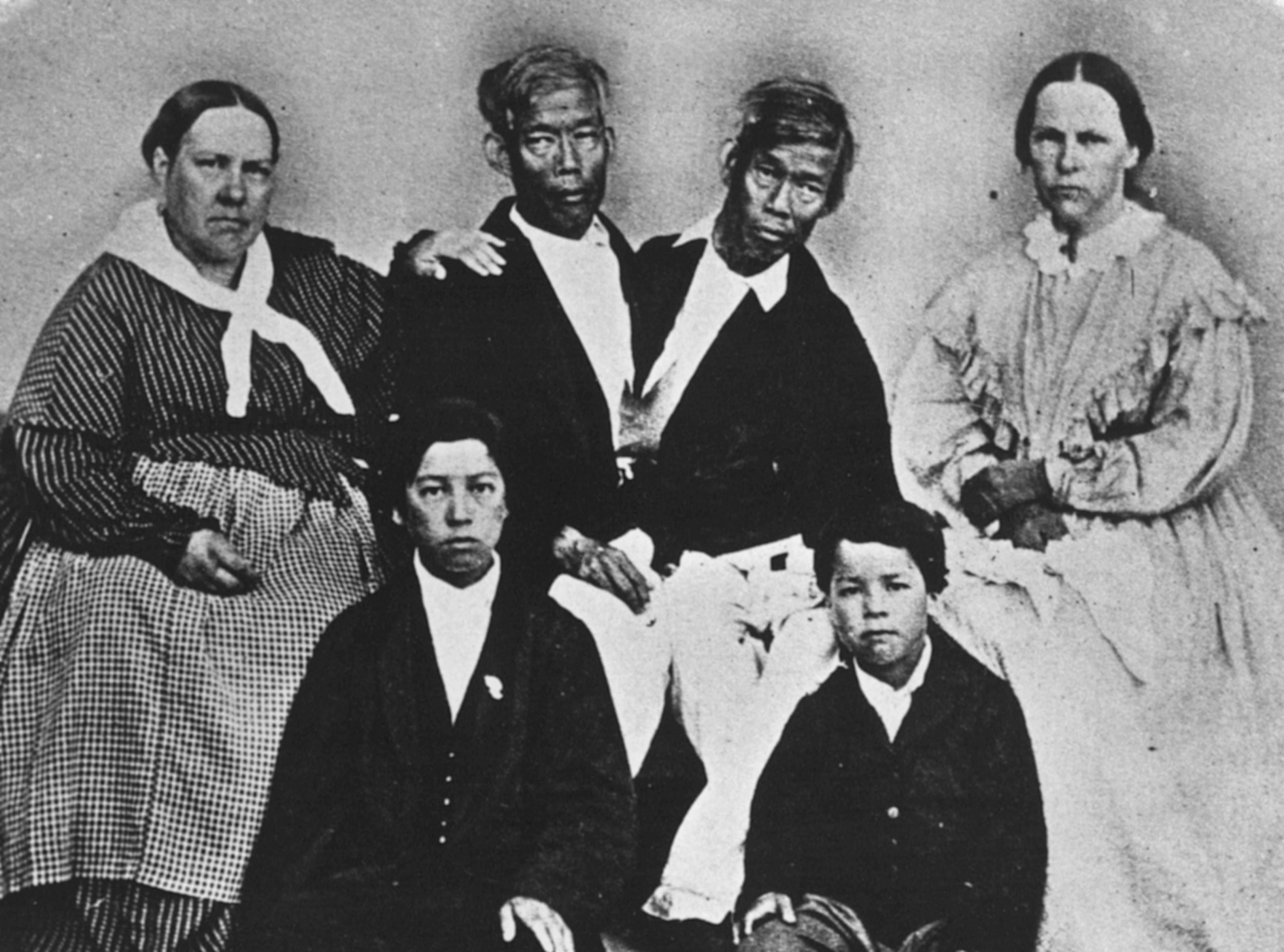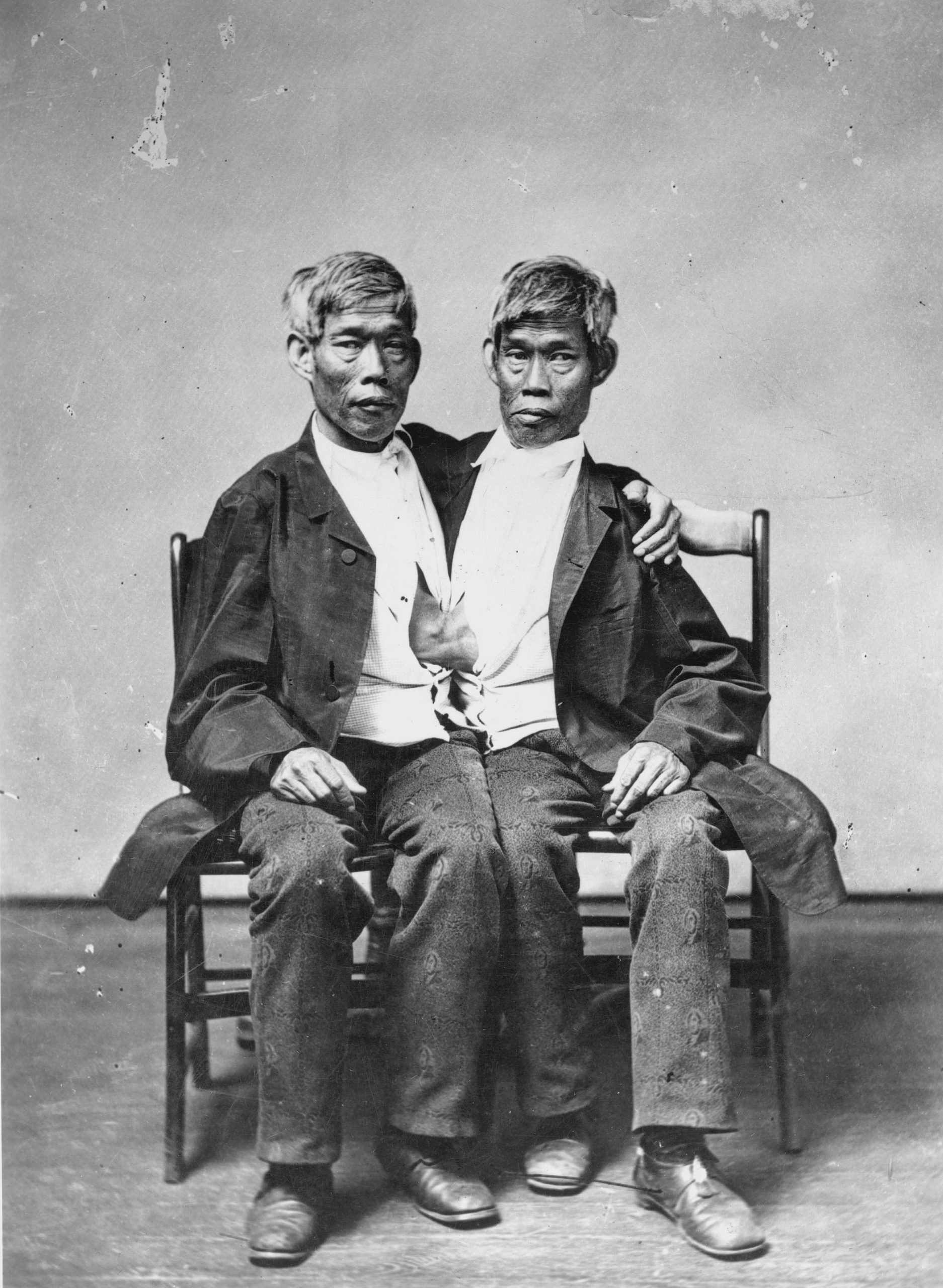
Credit: Alamy
World Famous Conjoined Twins Fathered 21 Children During Their Lifetime
The story of the world-famous conjoined twins Chang and Eng has gone viral.
Chang and Eng, born in Thailand in 1811, were joined at the sternum by a short, flexible band of flesh and cartilage.
Through this joining, their livers were also connected.
They are the reason the now-defunct term Siamese twins became famous – at the time of their birth, Thailand was called Siam.
The twins went on to lead a truly remarkable life, including fathering a whopping 21 children!
Related Article: ‘World’s Most Identical Twins’ Want To Get Pregnant At Same Time By Same Boyfriend
Related Article: People Are All Asking The Same Thing After Conjoined Twin Abby Hensel Got Married
Chang and Eng were reportedly discovered by a Scottish businessman named Robert Hunter in 1824, per Guinness World Records.
Chang and Eng eventually arrived in America in 1829, as Hunter had identified the couple had some extreme money-making potential.
After gaining fame for being some of the most well-known conjoined twins, Chang and Eng took control of their act, touring America.
They put on a show that included somersaults and swimming, but as the twins took control of the act, it became less spectacular and more serious, focusing primarily on a question-and-answer portion.
But aside from their rather interesting careers, it’s the personal lives of the twins that have the internet asking some serious questions…

Having a romantic partner while being permanently attached to a sibling sounds like a pretty difficult situation, but it looks as though Chang and Eng managed it just fine.
The twins married sisters Adelaide and Sarah Yates and set up two households.
They would reportedly spend three days at a time in each of their homes, with their respective families.
And those families were pretty large!
Between them, the twins fathered 21 children: Chang and Adelaide had 10, whilst Eng and Sarah had 11.
The amount of copulation needed to father over 20 kids is pretty intense, and it’s led some nosy commenters to question exactly how the twins got down and dirty.
But it seems as though that aspect of their lives will remain a mystery…

As per Craig Glenday, Guinness World Records Editor-in-Chief: “With Chang and Eng it was never really documented how they conducted themselves in a s**ually intimate way, but it is interesting to note that when the wives had their children, they delivered only maybe four or five days apart, which suggests some kind of coordination.”
He also confirms the twins never desired to be separated, adding: “They were born that way, they were used to it and they were able to function and have a normal life without being separated.”
Eng Bunker’s great-great-granddaughter, Misty Smith, tells ABC: “They weren’t just an ‘act’. They were complicated men who wanted to be good fathers and citizens.
“The truth is they wanted what people down through time have wanted, families and a home.”
The University of Queensland’s associate professor of cultural studies, Dr Elizabeth Stephens, goes on: “One of the things that made them so interesting… is the ongoing interest and the fact they would manipulate the public’s curiosity to their personal benefit.”
Alongside the large number of children shared by the twins and their partners, there were also more children in Chang and Eng’s care.

A dark aspect of the twin’s lives is the fact they owned and sold child slaves on their plantation.
Chang and Eng also showed support for the Confederacy during the Civil War, leaving a stain on their legacy.
On top of this, Change suffered a stroke in his later years.
It didn’t kill him, but left him severely debilitated, meaning Eng had to step into a role as his carer.
On January 17, 1874, at the age of 62, Chang died in his sleep.
Once Eng realised this, he knew he would die soon after, and reportedly did so within hours.
The Bunker twins held the record of oldest conjoined twins ever, until it was broken by Ronnie and Donnie Galyon (1951 – 2020), who lived to be 68.
Chang and Eng’s many descendants still meet up at a Bunker Family Reunion every year.
Misty explains: “Everything we do to learn and document is to leave a correct record of their amazing lives.
“People today aren’t as superstitious or unaccepting of those who are different. I do not think anyone today would characterise them as freaks or monsters.”